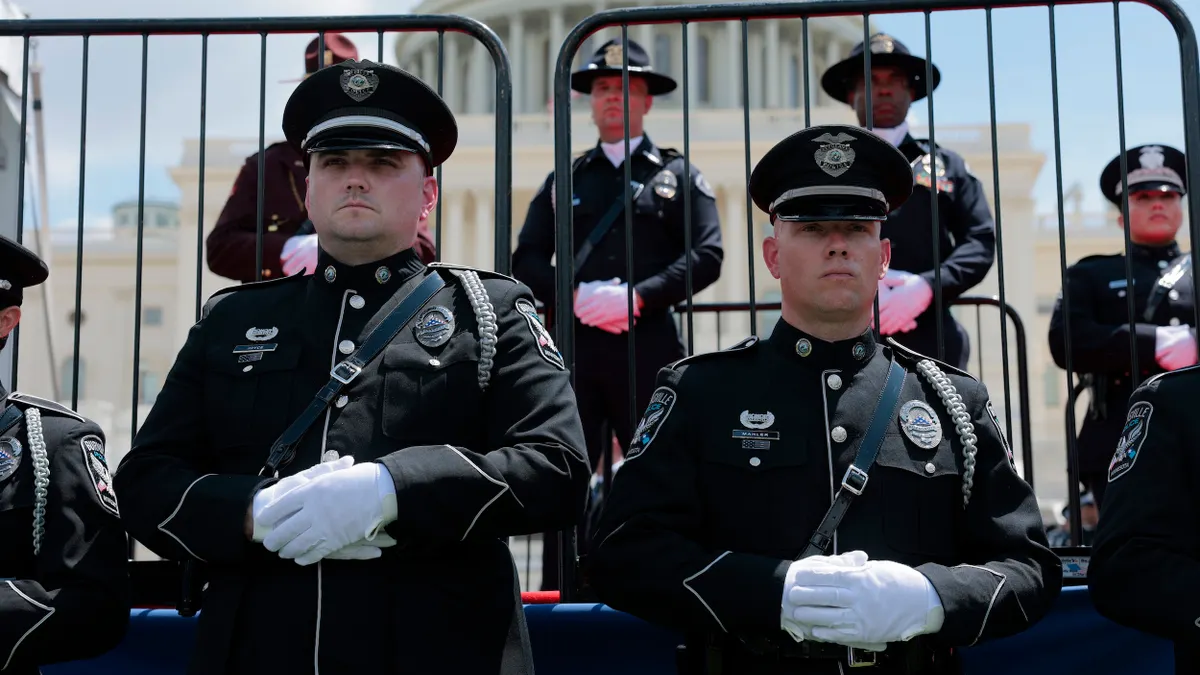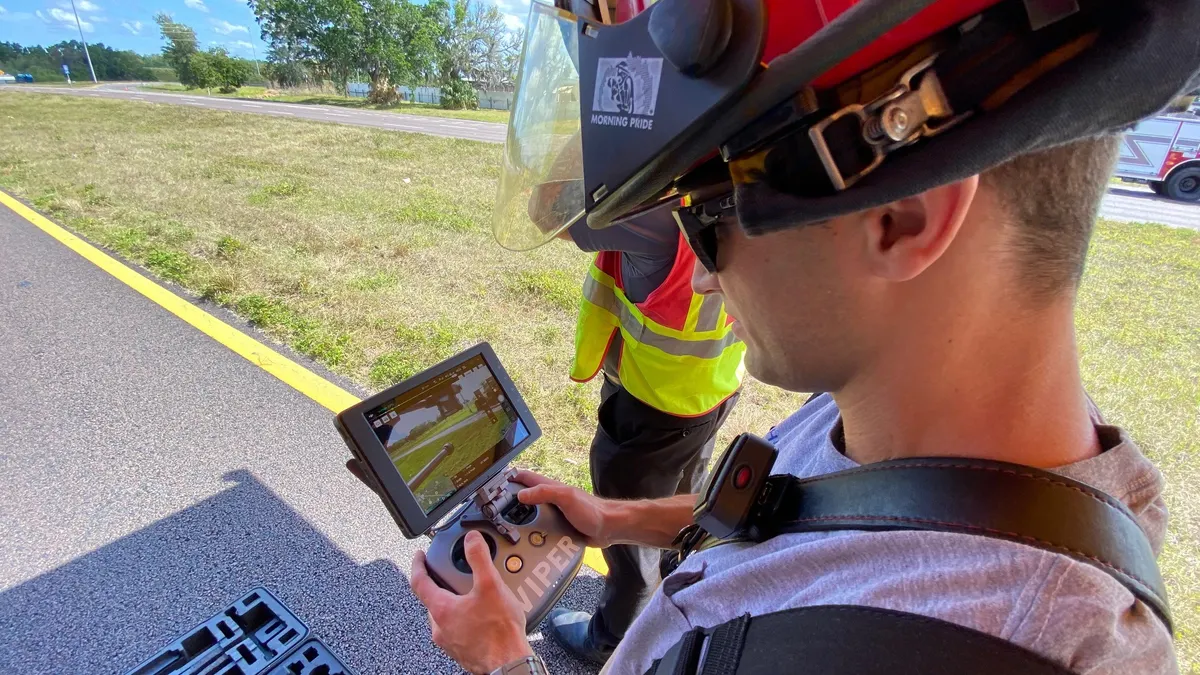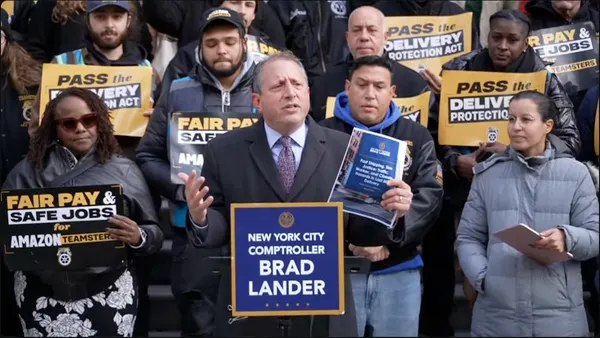Dive Brief:
-
The number of law enforcement professionals who died in the line of duty decreased by 53% in the first half of 2025 compared with the same time period last year, according to the National Law Enforcement Officers Memorial Fund’s midyear report.
- Firearms fatalities are the leading cause of death, accounting for 22 of the 42 officers who have died so far this year — a 21% decrease from the 28 officers killed by gunfire in the first half of 2024.
-
National Law Enforcement Officers Memorial Fund CEO Bill Alexander attributes the decline to officer safety and training programs, increased awareness of gun safety and a “shift in the conversation” toward recognizing law enforcement officers’ contributions.
Dive Insight:
Since 1786, more than 24,000 law enforcement officers have died in the line of duty, according to the National Law Enforcement Officers Memorial Fund, which compiles details on the circumstances surrounding line-of-duty deaths to create safety and wellness training programs.
The drop in midyear fatalities from 89 last year to 42 this year “is a relatively dramatic decrease,” Alexander said. “There are drops in every category that we track. Firearms fatalities are down, traffic fatalities are down and medical events in the ‘other’ category are down.”
Traffic-related fatalities decreased by 50%, from 26 in the first half of 2024 to 13 this year. Health-related and other line-of-duty fatalities dropped by 80%, from 35 in the first half of 2024 to seven this year, according to a National Law Enforcement Officers Memorial Fund press release.
While Alexander said he can’t point to “any definitive reason as to why the numbers are so much lower,” he has some “high-level ideas” that may have contributed to the overall number.”
Organizations and departments across the country have developed training protocols around traffic and firearm safety and de-escalation, Alexander said. Local policies such as “move over” laws, which require motorists to change lanes to provide a buffer when approaching stopped vehicles with flashing lights, have also made a difference, he added.
Officers are well aware that firearms are proliferating, Alexander said, and “being cognizant that every single person could be armed is better preparing officers all across the country to deal with that potentially fatal encounter that they might otherwise stumble into.”
Culturally, the national conversation has moved away from calls to defund the police that emerged during the civil unrest after George Floyd was killed in 2020 by a former Minneapolis police officer, Alexander said.
“I think there has been something of a sea change in that conversation about law enforcement in terms of recognizing that law enforcement has been and continues to be an overwhelming force for good, that we need law enforcement members in our communities,” Alexander said.
Alexander believes that shift in rhetoric is influencing the tone and tenor of encounters between the public and law enforcement, “resulting in fewer uses of force, fewer times that officer might have to draw his or her weapon and fewer times that an officer is facing a fatal outcome.











